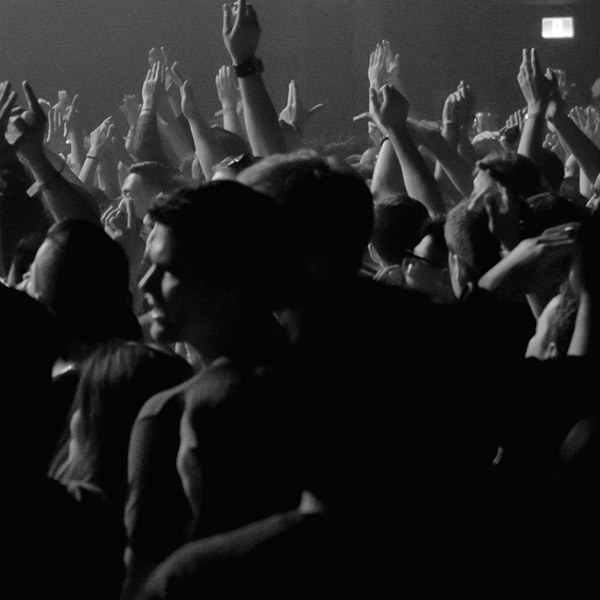NewJeans’ ‘I Feel Coke’ Campaign With Billboard Korea: Combining Retro Sensibility & Modern Aesthetics
On March 12, a video surfaced online that caused quite a stir. It was a new Coca-Cola ad featuring K-pop group NewJeans, also known as NJZ, which is currently at the center of much controversy. The ad quickly garnered reactions from around the world.
One comment on the ad effectively captures the essence of the project: “Is this from the ’80s or 2025? Is it real or is it a dream? Is it nostalgia or a memory of something I never experienced? It’s a work that confuses all of this. It feels like it’s depicting the past, but actually, it seems like an idealized version of the present moment. Ordinary yet beautiful people, scenes that feel both real and dreamlike, all captured with ethereal music and visuals. I can’t stop replaying it, as I don’t want to let go of the dreamlike feeling it gives me.”
The campaign, with creative direction by Billboard Korea, presented a unique blend of subtle retro vibes and fresh, modern sensibility that immediately caught fans’ attention. More than just a brand advertisement, it has been recognized as a work that conveys cultural and emotional interpretation. In the conversation below, Billboard Korea explains how they created a unique sensibility connecting the 1980s with Seoul in 2025.
How was the theme “I Feel Coke” conceptualized for the ad?
“I Feel Coke” was both the theme of a Coca-Cola Japan ad series that aired between 1987 and 1990 and the title of a song by Daisuke Inoue, which was featured in those commercials. The original ad was widely praised for capturing the spirit of Japan’s economic boom in the 1980s. In the 2025 Seoul version, we reinterpreted it as a tribute, blending nostalgia with a contemporary twist.
The new ad was inspired by the concept of Anemoia, a term that describes a sense of longing for a time or culture one has never actually experienced. We wanted to evoke the emotions tied to Coca-Cola from past eras while reimagining them in a fresh, modern way. Every detail was carefully crafted to preserve that feeling of nostalgia while making it relevant to today’s audience.
Can you explain “Anemoia” in more detail?
The term Anemoia was first introduced in 2012 by American writer John Koenig in “The Dictionary of Obscure Sorrows.” It describes the feeling of nostalgia for a time or culture one has never personally experienced. This emotion resonates strongly with Generation Z, who, amid uncertainty and anxiety, find themselves longing for the perceived prosperity and joy of past eras.
This growing fascination with revisiting and reinterpreting the past played a key role in shaping our creative direction. Our goal was to modernize nostalgia—capturing the essence of past memories while making them feel fresh and relevant today.
It’s clear that NewJeans being the models fits well. They both represent Gen Z and evoke nostalgia.
Exactly. NewJeans effortlessly blend a “longing for the past” with the “sophistication of the present.” As highlighted in Billboard Artist last October, they are not only icons of Gen Z but also a reflection of the nostalgia this generation experiences. Their unique ability to reimagine past eras with a fresh, modern twist made them the perfect match for this project and that synergy shines through in the ad.
What elements from the past were specifically referenced and which parts were reinterpreted in a new way?
One element that deeply moved us in the original ad was the happiness depicted — especially the brief moments of happiness that can be found in everyday life. We also paid close attention to authentic 1980s Japanese elements, such as the yuppie lifestyle, baseball, pay phones, leisure and health aesthetics, and more. In the 2025 Seoul version, we sought to reframe these experiences through the lens of Gen Z, while still capturing the sense of longing that was present in the original ad, reimagined with modern sensibilities.
What aspects of 2025 Seoul did you incorporate into the ad?
We aimed to capture different aspects of everyday life in 2025 Seoul, from the city’s efficient transportation system and vintage markets to social media content creation, instant photography and young adults moving into their first apartments. We also highlighted outdoor delivery meals and romantic moments on college campuses, small yet authentic elements that will resonate with people for years to come. These moments represent the happiness of today’s youth, which was at the heart of our vision for this project.
NewJeans’ rendition of “I Feel Coke” has garnered attention for its refreshing and dreamy vibe. How does it differ from the original song from the past?
ADOR and its A&R team aimed to preserve the essence of both the original song and the era it came from while capturing the signature feeling of the Coca-Cola brand. At the same time, they wanted to reinterpret it through the emotions NewJeans embodies today. The goal was to craft a track that complements NewJeans’ warm, understated, yet sophisticated vocal style.
The intro’s synthesizer melody follows the same pattern as the original, but with a fresh sound design. As the song progresses, the synthesizer and electric guitar in the second verse echo the original’s nostalgic vibe, while the outro introduces a saxophone, bridging the dreamy atmosphere of the past with a modern, refreshing touch.
How was the vocal distribution among the members decided?
ADOR carefully arranged the vocal distribution to highlight each member’s individual strengths. For the final choir section, they focused on enhancing the harmonies, ensuring that each member’s unique tone blended seamlessly while preserving the choral beauty of the original song.
Were there any special episodes during the arrangement and recording process?
During the arrangement process, the members of NewJeans gave input on the intro sound, helping refine it to perfectly complement the visuals of the ad. During recording, they focused on making the song their own while also capturing Coca-Cola’s signature sense of energy and refreshment, making the entire experience truly special.
In addition to the main ad video, there were also sub-content pieces. What were they?
Yes, we created several additional content pieces to enhance the campaign. For example, we designed illustrated posters featuring the 1980s Coca-Cola logo and imagined what Billboard Korea magazine covers might have looked like if it had existed back then.
NewJeans also shared behind-the-scenes collage videos filmed with disposable cameras and camcorders, capturing candid and intimate moments. These extra elements added emotional depth to the ad and gave fans a rare, personal glimpse into the members’ real personalities.
After the online release, there was an overwhelming public response. Can you share some memorable comments?
We got a lot of reactions, like: “It’s strange that I cried even though it’s just a commercial.” “It feels like watching an uplifting youth movie.” “The legendary collaboration between Billboard and Coca-Cola.” “I can’t stop replaying it.” “I’m only drinking Coca-Cola now.” (Fun fact: Coca-Cola sales went up on the release day and the day after.) The project manager at Coca-Cola Korea also shared that the comment “It delivers happiness in chunks” really stood out to them.
The collaboration between Billboard and Coca-Cola was also unique.
Exactly. We often take “happiness” for granted because it’s always around, and we think we understand it. But one of the simplest yet most essential ways to capture that feeling is through music. That’s why we believe music is the perfect medium to express the “feeling of happiness” that Coca-Cola stands for. The partnership between Coca-Cola and Billboard, with their rich histories, created a unique connection between music and advertising.
Do you have any behind-the-scenes stories you can share?
The sunny, warm summer vibe in the ad was actually filmed on a snowy day. [Laughs]
Jenny Regan
Billboard






